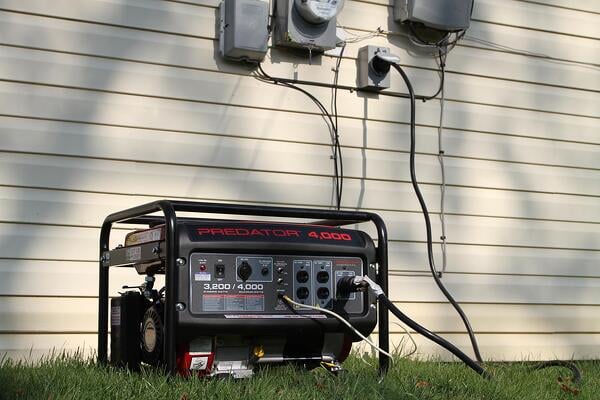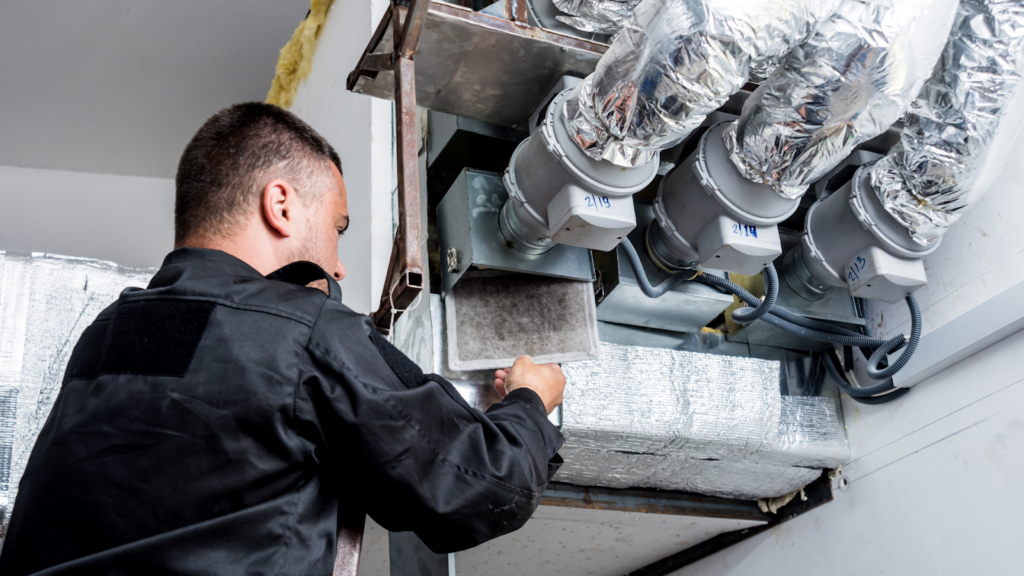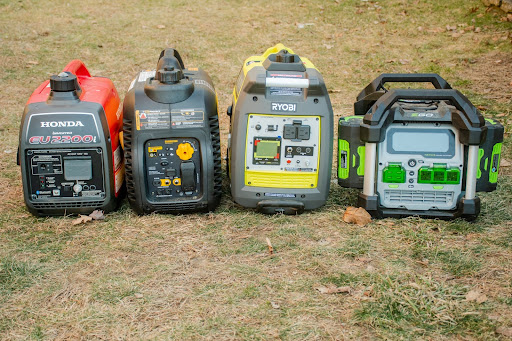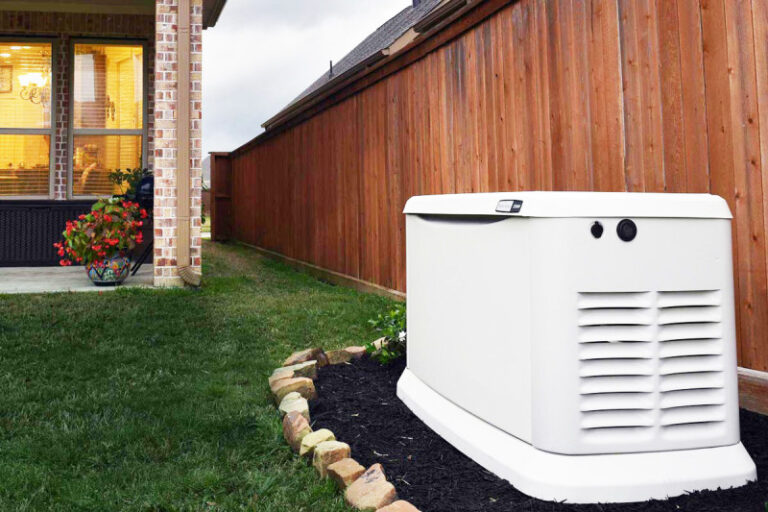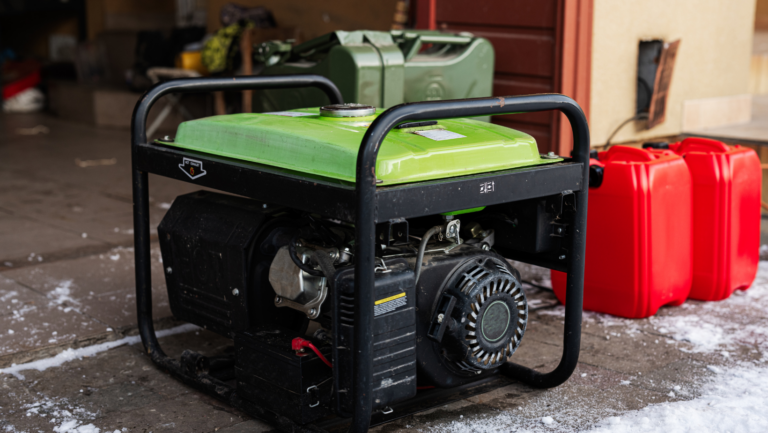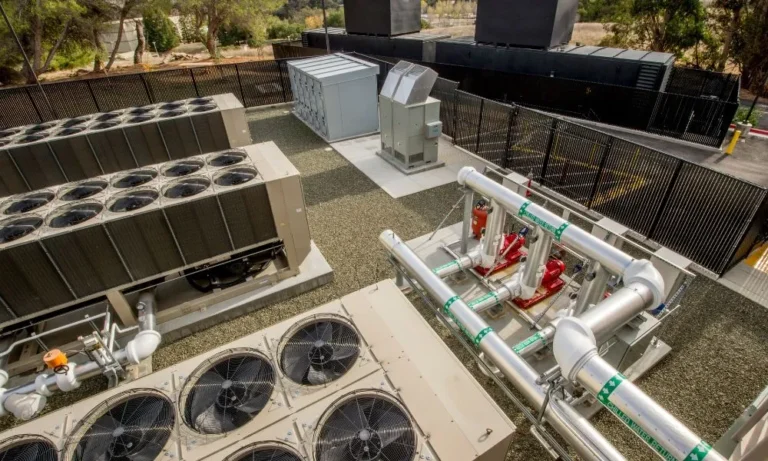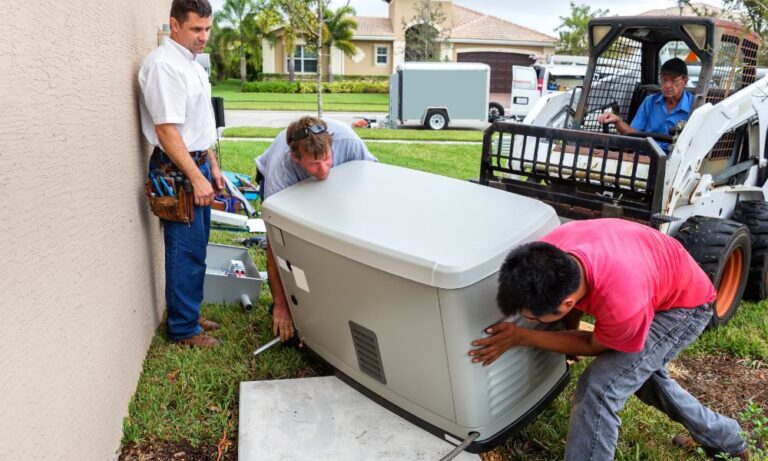How to Install a Generator Transfer Switch
A generator transfer switch allows for a safe and efficient transition from the main power grid to a backup generator without the risk of backfeeding.
Installing a transfer switch properly is crucial for safety and system functionality. In this blog post, we’ll guide you through the steps to install a generator transfer switch effectively.
Speak to a Qualified Technician
Step-by-Step Guide to Adding a Transfer Switch
1. Assess Power Needs
- Identify essential circuits (e.g., refrigerator, lighting, furnace) to determine the number of circuits to connect.
- Select the Appropriate Transfer Switch: Choose a model that matches your generator’s output and the number of circuits you plan to power.
- Gather Necessary Tools and Materials: Ensure you have wire cutters, strippers, screwdrivers, locknuts, conduit, and connectors.
2. Safety First
- Turn Off Main Power: Switch off the main circuit breaker to prevent electrical hazards.
- Verify Power is Off: Use a non-contact voltage tester to confirm that the power is off before proceeding.
3. Mounting the Transfer Switch
- Choose an Installation Location: Install the transfer switch near your main service panel, ensuring it’s easily accessible.
- Secure the Transfer Switch: Use appropriate fasteners to mount the switch according to the manufacturer’s instructions, ensuring proper orientation and clearance for future maintenance. This guarantees stability, accessibility, and reliability for your backup system.
4. Wiring the Transfer Switch
- Connect Circuit Wires: For each selected circuit, connect the corresponding wires from the transfer switch to the circuit breakers in your main panel.
- Handle 240V Circuits: For double-pole circuits, ensure both hot wires are connected and use a handle tie to link the switches.
- Neutral and Ground Connections: Attach the neutral wire from the transfer switch to the neutral bus bar and the ground wire to the ground bus bar in the main panel. Proper grounding is essential for safety and functionality, so connect the grounding wire as per local regulations and manufacturer instructions.
5. Connecting the Generator
- Install a Power Inlet Box: Mount the inlet box outside your home, ensuring it’s weatherproof and compliant with local codes.
- Run Conduit and Wiring: Connect the power inlet box to the transfer switch using appropriate conduit and wiring, following local electrical codes.
6. Testing the System
- Check for Proper Connections: Ensure all connections are secure and correctly wired.
- Test with Generator: Start the generator, connect it to the power inlet, and switch the transfer switch to the generator position.
- Verify Circuit Operation: Turn on each circuit individually to confirm they are powered by the generator.
7. Labeling and Testing the System
- After installation, label each circuit on the transfer switch to match the corresponding circuit in your main panel. This ensures easy identification and safe operation during power outages.
- Once the generator is running, test the system by switching on several circuits to ensure it can handle the load. This verifies that the transfer switch and generator work together as expected.
READ MORE: Integrating HVACs and Generator Systems
What is a Generator Transfer Switch?
A generator transfer switch connects your home’s electrical system to a backup generator. It ensures a smooth transition during power outages, providing reliable electricity. The switch also prevents backfeeding, which can be hazardous to both your system and utility workers.
At Beam Airflow, we specialize in installing and maintaining generator transfer switches for homes and businesses. Our expert team ensures a seamless, safe power transition during outages, giving you peace of mind.
Speak to a Qualified Technician
Types of Transfer Switches
There are mainly two types of generator transfer switches, each designed to meet different power needs. Understanding the differences between them helps you choose the right option for your home or business.
Manual Transfer Switches
Manual transfer switches require you to manually switch from the main power grid to the generator during an outage. They are more affordable but require user intervention, making them suitable for less urgent power needs.
Automatic Transfer Switches
Automatic transfer switches detect power outages and automatically switch to the generator without any user action. These switches are ideal for situations that require uninterrupted power, such as hospitals or data centers.
Pros and Cons of Each Type
| Cost | Installation complexity | Control | Additional considerations | |
| Manual Transfer Switch | Cost-effective | Simple installation | Manual control | The manual intervention may lead to a brief power interruption during switch-over. |
| Automatic Transfer Switch | Higher cost | More complex installation | Automatic operation | Advanced features, dependency on electronic components, seamless transition. |
Compliance and Regulations
Before installing a generator transfer switch, it’s important to understand and follow local building codes. These codes vary by location, so make sure your installation meets local safety standards.
Compliance with National Electric Code (NEC):
- The NEC provides guidelines for electrical installations across the U.S. Adhering to NEC standards is often legally required and ensures safety.
- Review NEC sections relevant to transfer switches to ensure compliance.
Obtaining Necessary Permits:
- Check with your local building department to determine the required permits.
- Securing permits ensures the installation is legal and provides access to safety inspections.
Troubleshooting Common Problems
Switch Malfunctions
If the transfer switch malfunctions, check for faulty circuitry, damaged components, or issues with the control mechanism. Use a systematic approach to pinpoint the problem and quickly restore power, ensuring minimal downtime.
Power Transfer Issues
If power isn’t transferring smoothly between the main supply and the generator, inspect for wiring issues, relay malfunctions, or generator problems. Understanding the system’s components and how they interact will help you troubleshoot more effectively.
Seeking Professional Assistance When Needed
Some issues may require professional expertise. If troubleshooting goes beyond your knowledge or abilities, it’s best to consult a qualified electrician to properly diagnose and repair the system.
Ensuring Reliable Backup Power with a Generator Transfer Switch
Installing a generator transfer switch is an essential step in ensuring reliable backup power during outages. By choosing the right type of transfer switch and following proper installation guidelines, you can ensure seamless power transfer and keep your home or business running smoothly when the grid goes down.
With the right knowledge and a step-by-step approach, you can confidently install and troubleshoot your generator transfer switch. For complex issues, don’t hesitate to seek professional help to keep your backup power system functioning properly.
For smart, efficient power management, Beam Airflow offers expert installation and maintenance services to ensure your generator transfer switch is always operating at peak performance.
Our team is here to help you keep your backup power system reliable and ready when you need it most.

